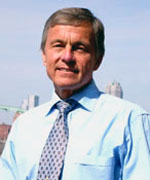
Extracellular matrix (ECM) represents the structural and functional molecules secreted by the resident cells of every tissue in the body. Researchers in the laboratory of Stephen Badylak, DVM, PhD, MD, Professor in the University of Pittsburgh’s Department of Surgery, a deputy director of the McGowan Institute for Regenerative Medicine, and Director of the Center for Pre-Clinical Tissue Engineering within the Institute, have extensive experience isolating and harvesting this ECM and producing usable formats for use in pre-clinical animal and bench top studies. Scientists routinely produce ECM from tissue such as small intestine, urinary bladder, and liver tissue. The cells of these tissues are removed by physical, enzymatic, and/or chemical methods so that only the native ECM remains.
In Dr. Badylak’s lab, research continues on utilizing organ ECM scaffolds to one day use as replacement organs to patients in need. Some organs, like skin and bladders, may be available to patients much sooner than more complicated organs like liver, lungs, and heart.
“These two organs [liver and lungs] have the anatomy where they can hook up the plumbing and … still have the benefit of the remaining failing organ while the new organ is taking hold,” says Dr. Badylak in his interview with Kate Baggaley, Science Writer for NBC. His research team is investigating how best to reseed engineered livers with new cells.
“We’re still trying to figure out what’s the best recipe,” he says.
Watch these videos from the Badylak lab on decellularizing and seeding a liver ECM scaffold.
Another option to acquiring much needed organs is to “build them from scratch” and print them on a 3D printer, later to be individualized for the patient. There’s a lot we still don’t know about how our organs are put together on a microscopic level, and what directions they need from the body.
“I know the general shape of a liver,” Dr. Badylak says. “What I don’t know is how the cells are layered exactly next to each other. Technology has outpaced our understanding of biology, and we need to understand more about what we want to print.”
Read more…
